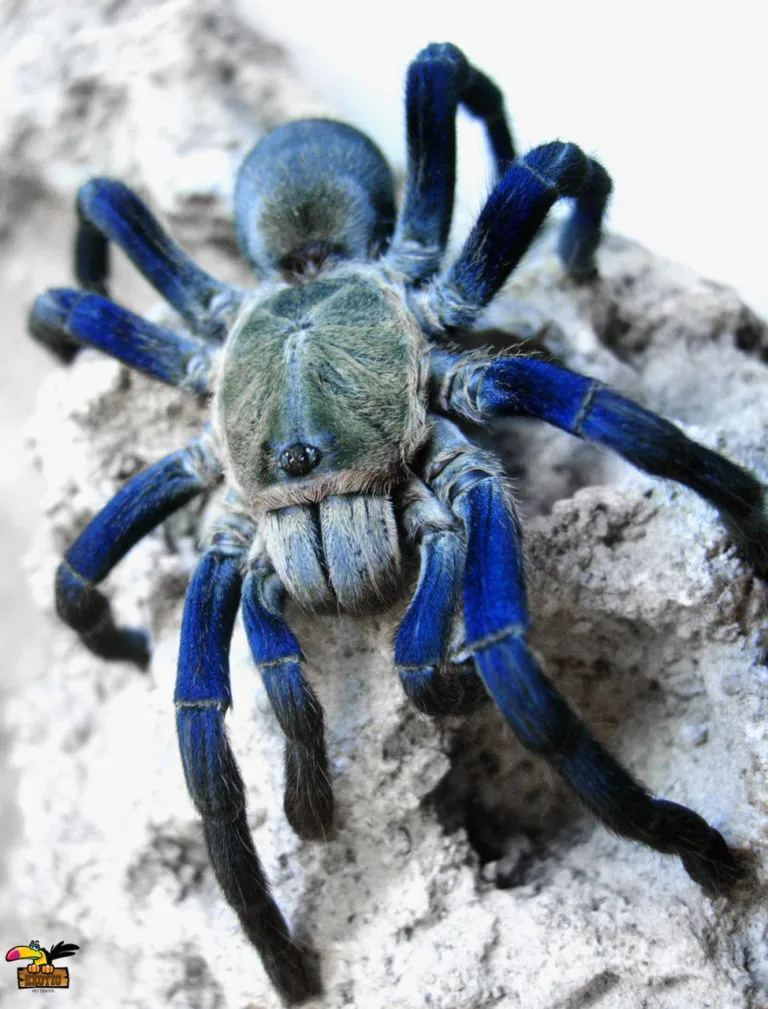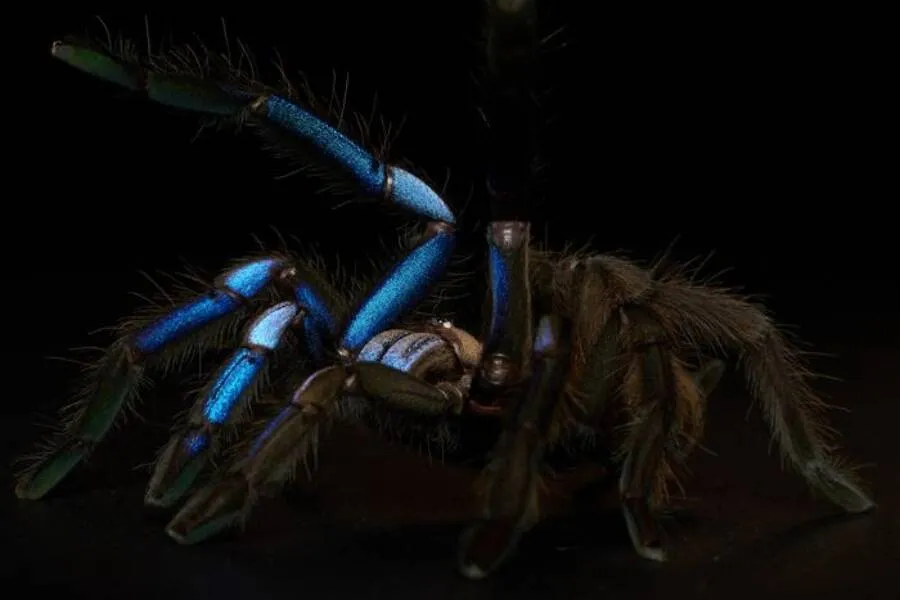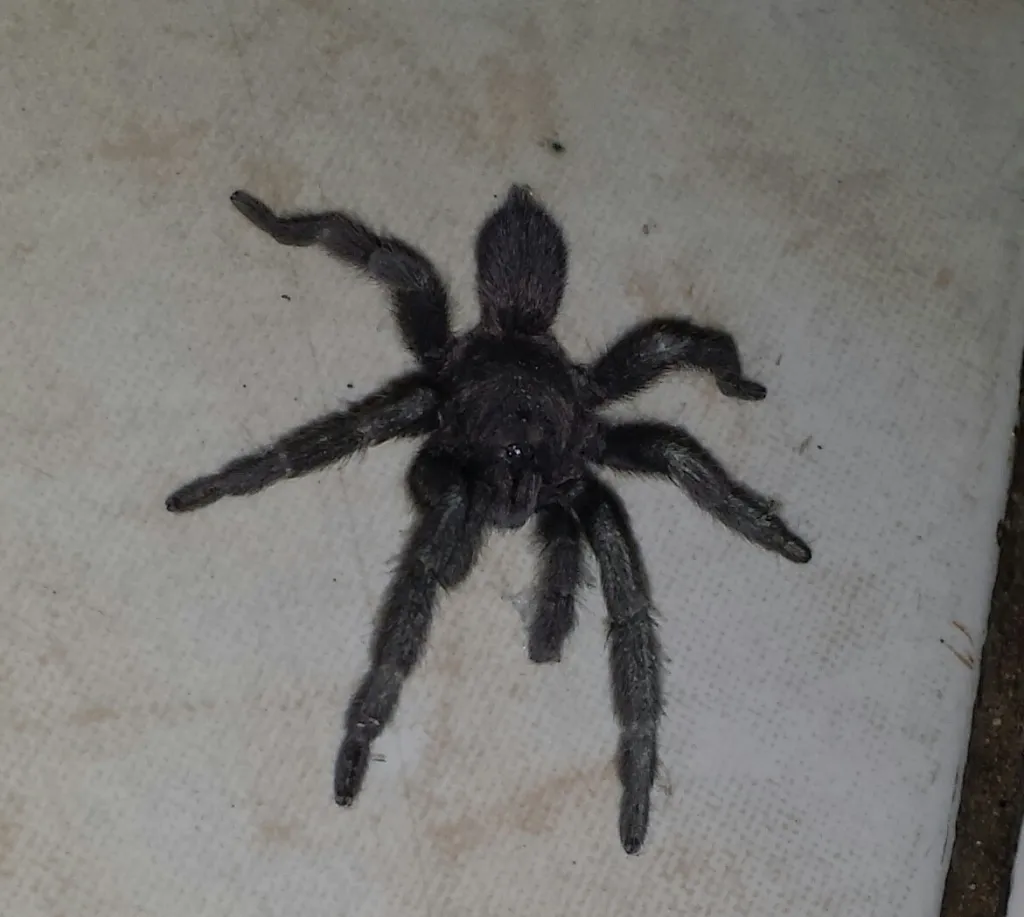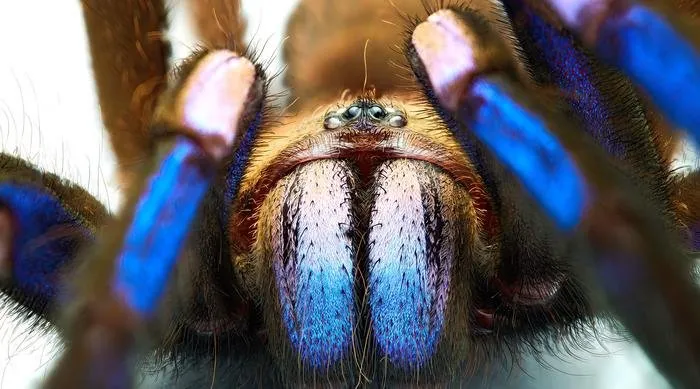What are Blue Tarantulas?
Blue tarantulas, captivating arachnids, are a sight to behold. These spiders are known for their striking blue coloration, which can range from a vibrant azure to a deep, metallic indigo. The specific shade and intensity of the blue can vary depending on the species, the spider’s age, and even the lighting conditions. They are highly sought after by enthusiasts. Despite their beauty, they are still wild animals that must be treated with respect. They are an amazing example of nature’s creativity.
Physical Characteristics of Blue Tarantulas
The most distinguishing feature of the blue tarantula is, of course, its brilliant blue hue. This coloration is not due to pigments, but rather to the microscopic structure of the hairs on their bodies, which diffract light to create the vibrant blue appearance. Beyond their color, blue tarantulas share typical tarantula characteristics: large size, eight legs, and a hairy body. Their size varies depending on the species, but they generally range from medium to large, with a leg span that can reach several inches. They have fangs, used for injecting venom into their prey, and pedipalps, which are used for sensing and manipulating objects.
Habitat and Distribution of Blue Tarantulas

Blue tarantulas are primarily found in the tropical regions of the world, with several species native to Southeast Asia, including the Philippines. They are ground-dwelling spiders, often found in burrows or under rocks and logs. The specific habitat can vary depending on the species, but they generally prefer humid environments with plenty of cover. These spiders are often found in forested areas, from rainforests to more open woodlands. They play a crucial role in their ecosystems, controlling insect populations. The Philippines, with its diverse ecosystem, provides a suitable habitat for these fascinating creatures. It is important to note that the exact distribution of specific blue tarantula species can be quite localized, making them a special find.
Where to Find Blue Tarantulas in the Philippines
Finding blue tarantulas in the Philippines requires a combination of knowledge, patience, and respect for their habitat. They are not found everywhere, so knowing the right locations is key. It is important to remember that, while exciting to find, these creatures are part of a delicate ecosystem. The best places to look are in areas with dense vegetation and humid conditions, such as primary and secondary forests. Mountainous regions with less human activity are also great candidates. Be mindful of any local regulations regarding wildlife observation and conservation areas, and always prioritize their wellbeing. Their presence is an indicator of a healthy environment. It’s an exciting pursuit and one that needs to be done with care.
Ideal Habitats
Blue tarantulas thrive in specific habitats within the Philippines. Look for areas that mimic their natural preferences. These include locations with high humidity, such as near streams or in areas with dense foliage that traps moisture. They often prefer to live in burrows. Rocky terrains with crevices can provide excellent shelter. The presence of leaf litter is also a good sign, as it provides both cover and a source of food. Always ensure you are on authorized land and respect local regulations. The right habitat is paramount to their survival.
Best Time to Search

The best time to search for blue tarantulas is during the wet season, when humidity levels are high and the spiders are more active. Mornings and evenings are generally optimal times for observation, as the cooler temperatures and higher humidity encourage them to emerge from their burrows or shelters. Avoid the hottest parts of the day, when they are less likely to be seen. Be patient and persistent, as these spiders can be elusive. Consider the timing of your search to maximize your chances of a sighting. Proper planning can make all the difference.
Tips for Spotting Blue Tarantulas
Spotting blue tarantulas requires a keen eye and a methodical approach. Scan the ground and low vegetation carefully, looking for any movement or unusual shapes. Be patient and move slowly to avoid startling them. They can often be identified by their distinctive blue coloration. Even a glimpse of the blue can be enough to confirm their presence. Their burrows are often well-hidden. Observe from a distance to avoid disturbing them. With practice and patience, you will greatly improve your chances. This is often a process of careful observation.
Equipment and Tools
When searching for blue tarantulas, it’s important to have the right equipment. A good pair of binoculars can help you spot them from a distance without disturbing them. A strong flashlight can be useful for illuminating dark areas, such as burrows or under rocks. Sturdy hiking boots are essential for navigating uneven terrain. A camera with a good zoom lens will allow you to capture images without getting too close. Always bring a first-aid kit and insect repellent. Having the proper tools not only enhances the experience but also ensures safety.
Responsible Observation

Responsible observation is key to protecting blue tarantulas and their habitats. Avoid disturbing the spiders or their burrows. Never attempt to handle or capture them, as this can be dangerous for both you and the spider. Observe from a safe distance. Take only pictures, and leave only footprints. Report any sightings to local authorities or conservation organizations. Respecting the environment is paramount. Your actions have a significant impact on the survival of these magnificent creatures. Responsible observation ensures their wellbeing and helps in the protection of their natural habitats.
Conservation and Threats to Blue Tarantulas
Blue tarantulas, like many species, face a number of threats. Habitat loss due to deforestation and human development is a major concern. The pet trade can also pose a risk, as some individuals may be captured for sale. Climate change can also have impacts on their habitat. Conservation efforts are crucial to protect these amazing creatures. Supporting local conservation organizations is a great way to help. Awareness and education about the importance of tarantulas are also essential. This is necessary to protect these creatures for future generations. These efforts are important to the future of the tarantula.
Protecting their Habitats
Protecting the habitats of blue tarantulas is vital for their survival. Support conservation efforts aimed at preserving their natural environments. Advocate for responsible land use practices that minimize habitat destruction. Participate in reforestation projects or volunteer to help restore degraded areas. Educate others about the importance of protecting these unique creatures and their homes. Every action, no matter how small, can make a difference in safeguarding their future. Habitat protection is vital to the long-term survival of the species. Active participation is key to ensuring their wellbeing.
In conclusion, finding blue tarantulas in the Philippines is an exciting adventure. By understanding their habitat, employing responsible observation techniques, and supporting conservation efforts, you can contribute to the preservation of these stunning creatures. Remember to respect their environment, and appreciate the beauty of nature. The blue tarantula is a testament to the wonders of the natural world. Happy exploring.
